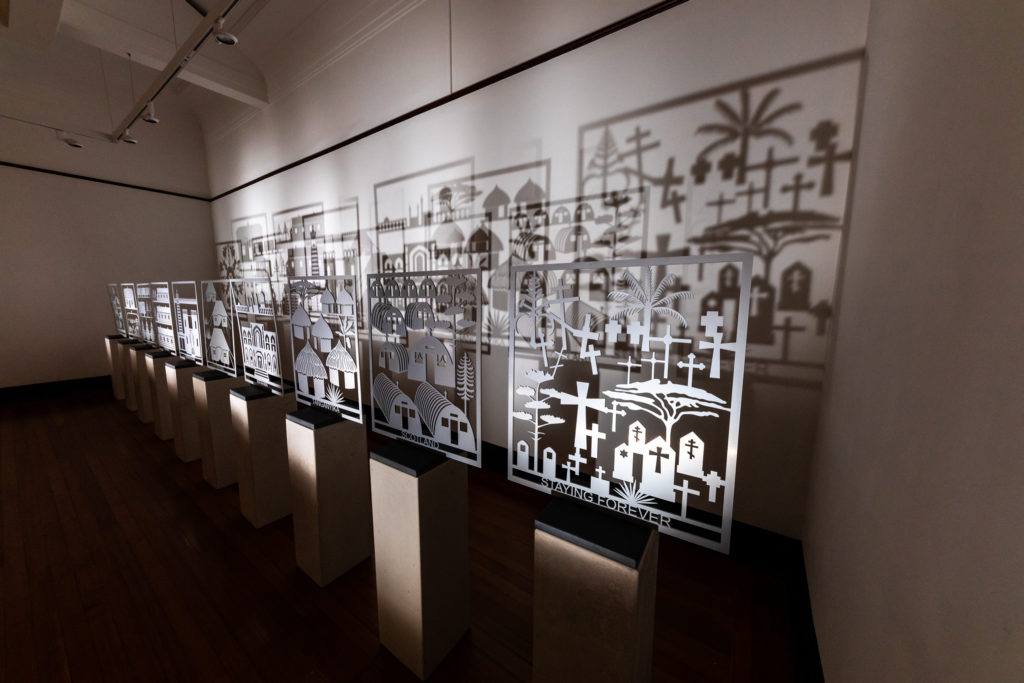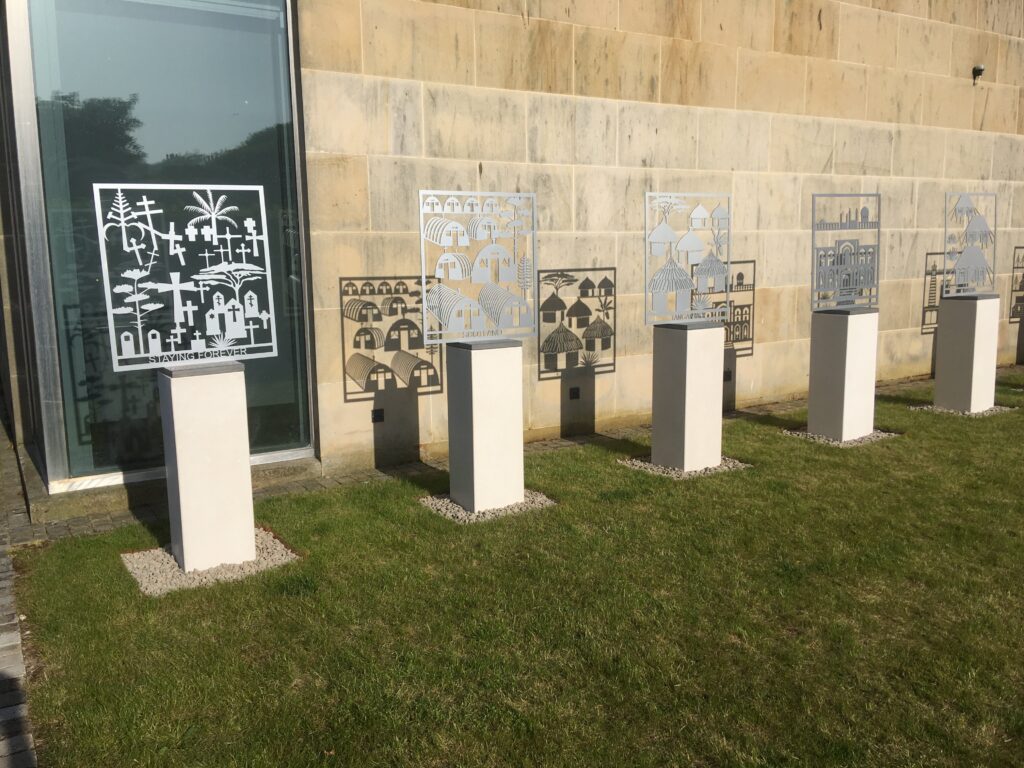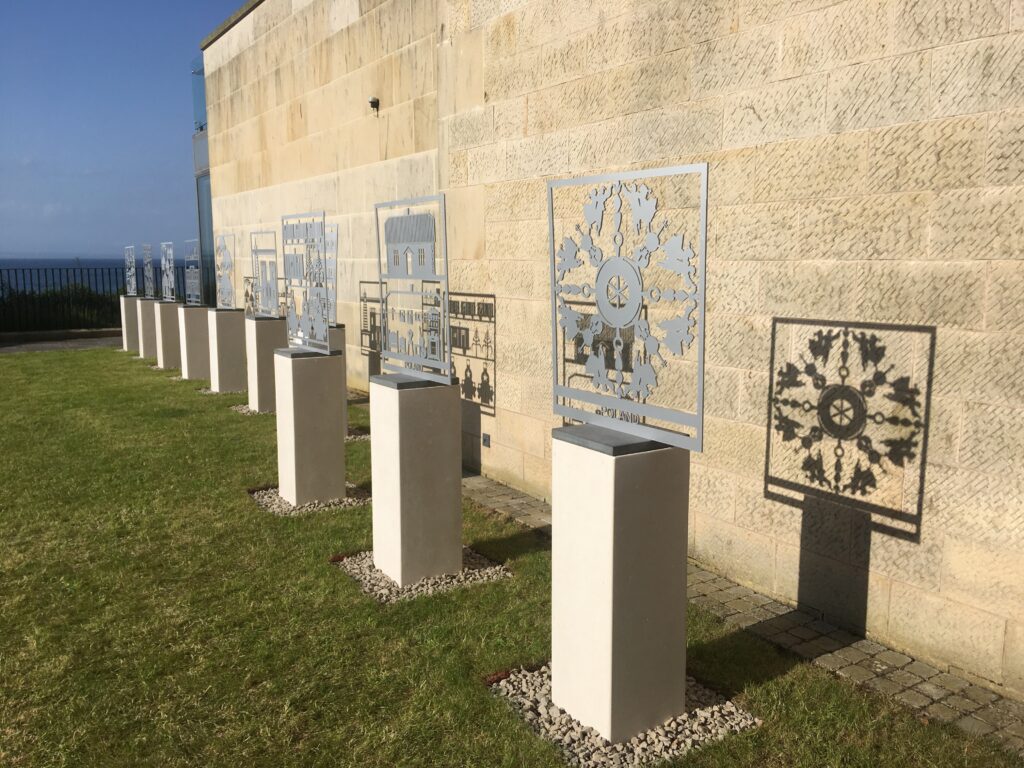Visualising Forced Migration
This project asks a question of great contemporary importance: how can we understand what it is like to be displaced from one’s home by conflict? Through a range of historic and 21st-century stories, we amplify the voices of people who have experienced forced migration from antiquity to the present day. Our aim is to generate inclusive, reflective conversations about how we grasp and represent the different forms of rupture, journeying and home-making which forced migrants have to deal with on a daily basis, all around the world.
Part of the Imperial War Museums’ 14-18 NOW Legacy Fund, with support from OnFife’s Kirkcaldy Galleries and the University of St Andrews, we are hosting a series of art exhibitions, schools’ workshops and public outreach events throughout 2023. The centrepiece of our project is a new work of art by Diana Forster entitled ‘Somewhere to Stay‘. It traces the long journey that Forster’s mother took when she was forcibly displaced from her childhood home in eastern Poland (now Ukraine) and transported to a Soviet labour camp in Arkhangelsk during the Second World War. Adopting traditional Polish folkcraft techniques, Forster’s artwork depicts the comfort and security of life before deportation; the deportees’ arduous journey on sledges, cattle trucks and trains; and the accommodation they lived in, from wooden barracks in Siberian gulags to an ordinary house in Uzbekistan, army tents in Iran, thatched rondavels in Africa, and Nissen huts in resettlement camps in Scotland. This story has much to contribute to our understanding of the impacts of forced migration past and present, and it is part of wider research being carried out by the Visualising War and Peace project, looking at how we understand and narrate war’s aftermath. You can learn more in the video below.




You can find out more about our in-person activities on our ‘Exhibitions‘ page. The digital content that you can explore on this site is designed to complement our in-person activities and to broaden our discussions, including more voices and perspectives on forced migration. We invite you to explore the moving stories that we have curated here and to tell other people about them. As one of our contributors, Dr Lina Fadel, puts it: ‘There is no act more generous or humane than letting someone tell their story the way they want it to be heard, and actively listening to them, with humility and self-awareness’. So let’s get the conversation going about our own habits of visualising forced migration and the role that storytelling can play in deepening our understanding of this particular legacy of conflict.